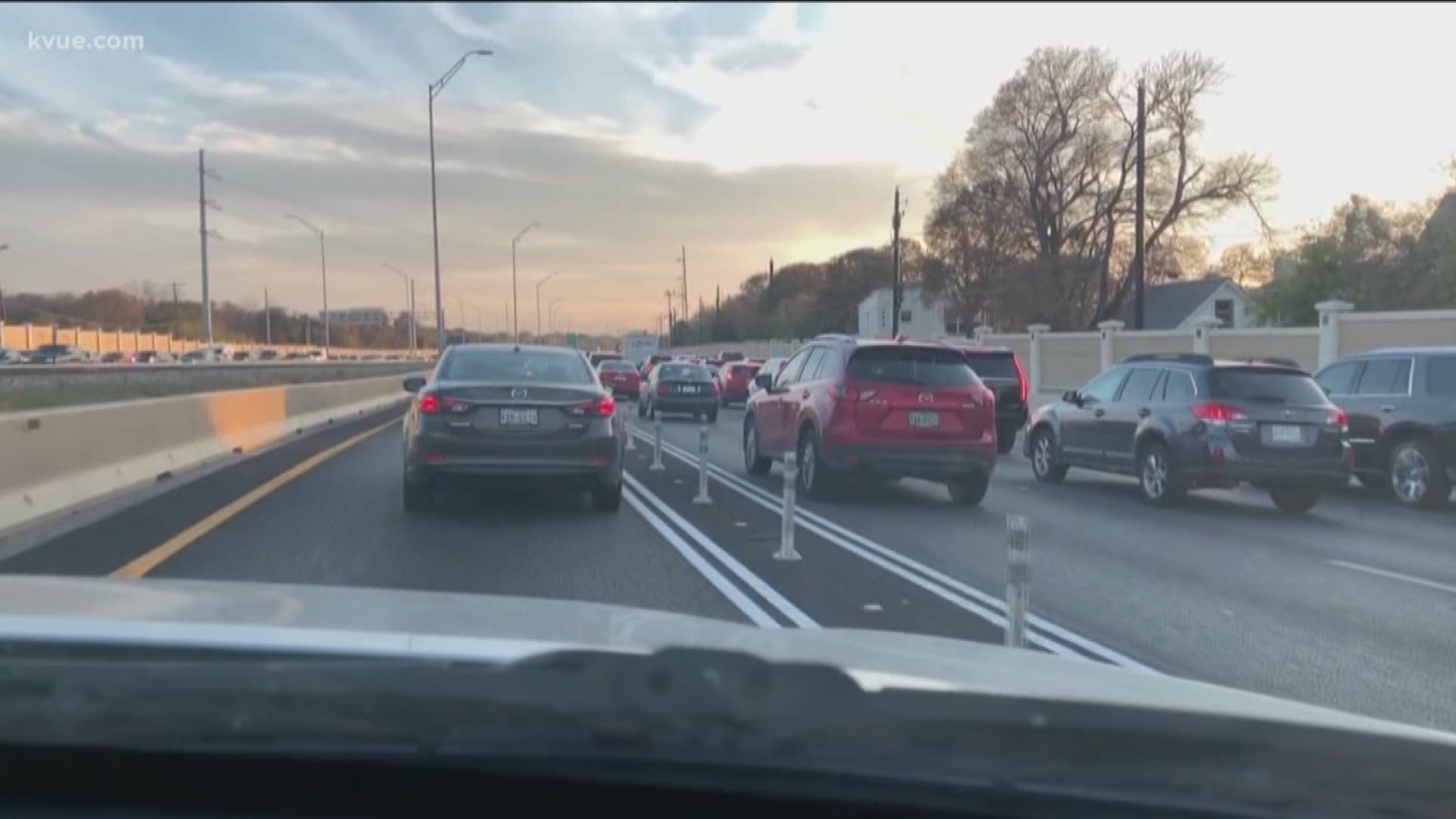AUSTIN, Texas — If you've found yourself stuck in standstill traffic on the MoPac Express Lane during rush hour, join the club.
It's just one of the issues the Central Texas Regional Mobility Authority (CTRMA) hopes to tackle within the next year.
Oftentimes, getting on the MoPac Express Lane is a game of chance because you never know what you're going to get, depending on the time of the day.
"It would be so expensive, and it wouldn't really move at a different pace than the regular traffic, so I would kind of just avoid them," Lorissa, who used to ride on the express lane, told KVUE.
Some of that congestion – and lack of consistency – is thanks to, in part, Austin's growing popularity, according to CTRMA executive director Mike Heiligenstein.
"I think that it's not particularly surprising given the new traffic that's coming into town and the current influx of people moving to Austin," he said.
But data shows the express lanes still work, although they're getting slower.
Year over year, the speeds on the express lanes have dropped about 5 mph during rush-hour peaks, according to data provided by CTRMA.
The year 2017, according to the data, is considered as Nov. 2017 through Oct. 2018. The same months are used for the year 2018.
In June 2019, for example, the average speed on the northbound express lane in the afternoon was about 47 mph. That's still better than the regular traffic, which was going about 30 mph.
"Even if it's 47 miles an hour as opposed to 50, it's still a reliable alternative to the congested non-toll lanes of MoPac," Heiligenstein said.
The Mobility Authority is investing $15 million over the next year to fix some of the bottlenecks along the express lanes, including the congestion at the southbound entrance near RM 2222, he added.
The agency is also looking at upping the price you pay to get on.
"We're playing with the balance between the number of people that want to get in that lane and the ceiling and the price," Heiligenstein said. "Over time, that ceiling will go up as we push people out in terms of trying to keep that moving."
It's also considering trying out higher lane dividers and adding more of them to reduce the gap between them and prevent people from cutting in.
RELATED:
"We have issues with people crossing the traffic sticks. We're going to end that. That's a very dangerous movement, and we want to stop that," he said.
Still, as more people move to Austin, what drivers get out of the express lanes will depend on what they're willing to give up.
"I think you're going to see more changes in driver behavior, more carpooling," Heiligenstein said. "I think they're going have to bear the cost, the true cost, of what it takes to get on that pavement at that time of day."
PEOPLE ARE ALSO READING:

